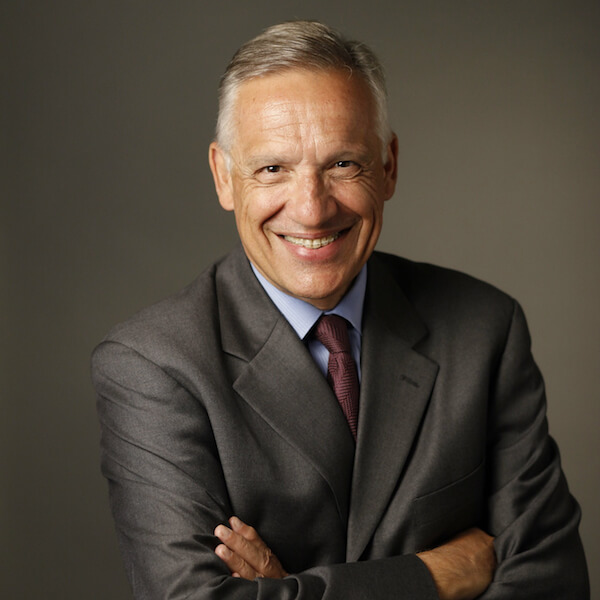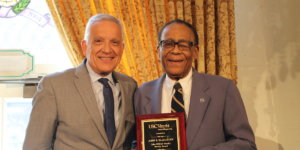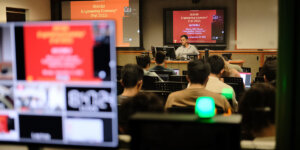
(Art/Shutianyi Li)
This fall, and following the National Academy of Engineering‘s (NAE) Call to Action for engineers to “crowdsource and collectively brainstorm engineering solutions for the coronavirus disease (COVID-19),” Yannis Yortsos, dean of the USC Viterbi School of Engineering and a member of the executive committee of the Call to Action, launched the first installment of “Viterbi vs. Pandemics!” This new lecture series by USC Viterbi faculty comprehensively provides an engineering-centric framework for addressing and understanding the COVID-19 pandemic.
During the 10-week, free program, students will gain exposure to myriad topics, ranging from the estimation of risk and protein engineering by directed evolution to the contributions made by computer science and electrical engineering faculty in automating human safety technologies, detecting misinformation and digital contact tracing. The one- to two-hour sessions, which take place Thursdays at 6 p.m., will extend until November 12.
“We believe that we have made some novel contributions to how the epidemic spreads that provide new insights and can help arrest the contagion,” Yortsos said.
On Sept. 10, Yortsos and Assad Oberai, Hughes Professor of Aerospace and Mechanical Engineering, joined forces in the inaugural lecture: “Modeling Epidemics As a Chemical Reaction Process.”
The following is a Q&A with Dean Yortsos.
For those who missed it, can you briefly summarize your lecture for a general audience?

Yannis C. Yortsos, dean of the USC Viterbi School of Engineering (Photo/Courtesy of USC Viterbi)
YY: It provides a novel, predictive model for the spreading of human-to-human contagious diseases, such as COVID-19. The model is based on rigorous analogies with those involved in chemical reaction processes.
Why is this research important? How will it help in the fight against COVID?
YY: Current models do not account for one of the most important aspects in the spread of COVID, which is spatial density. In addition, they assume that populations are spaced equally and also that they do not diffuse. Our model accounts for both these crucial effects and allows one to differentiate regions, areas or domains based on their spatial density of populations, as well as to predict the emergence of contagion waves that propagate from one region to another. The predictive nature of the model provides a rigorous setting for the development of more accurate health policies.
How would you compare your research to similar research or ideas, either in academia or industry?
YY: Our work improves in a most substantial way the SIR model, which is the gold standard in the modeling of epidemics since it was first published almost 100 years ago.
What are the next steps and/or milestones in terms of your work?
YY: The next task is to provide methodologies to extract quantitative information on the key parameter, as well as on the elusive concept of “herd immunity” from existing data.
Tell us about your collaborators. What unique skills does each person bring? Are you partnering with any doctors, clinicians or other non-engineers in this work?
YY: The work was done by engineers (faculty and a Ph.D. student). We have shared our findings with other colleagues, both engineers and non-engineers.
Can you share one story from your pandemic life? How has it impacted your work and family? What are you doing to stay sane?
YY: Zooming is an occupational hazard! Watch out for your neck muscles.
From a research perspective, what do you consider the most surprising or counter intuitive aspect of the virus or the pandemic as a whole?
YY: The most crucial contributor to the spreading of epidemics, like COVID-19, is the general public’s lack of intuitive understanding of the nature of exponential growth. Humans tend to extrapolate on a straight line. But epidemics grow exponentially. This means that unless the public takes very serious measures early on, the epidemic will inevitably spread. Likewise, the tendency for people to relax when the epidemic appears to have ebbed inevitably brings another contagion wave. Both these are counter-intuitive.
What are some words of wisdom regarding the pandemic that have meant a lot to you?
YY: Pandemics are a human-to-human issue and therefore require human-to-human cooperation for their suppression. This is truly a public issue requiring public cooperation.
Related Paper: A COMPREHENSIVE SPATIAL-TEMPORAL INFECTION MODEL
Published on September 30th, 2020
Last updated on October 1st, 2020











